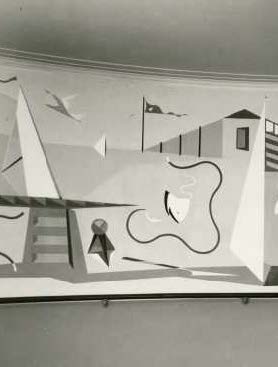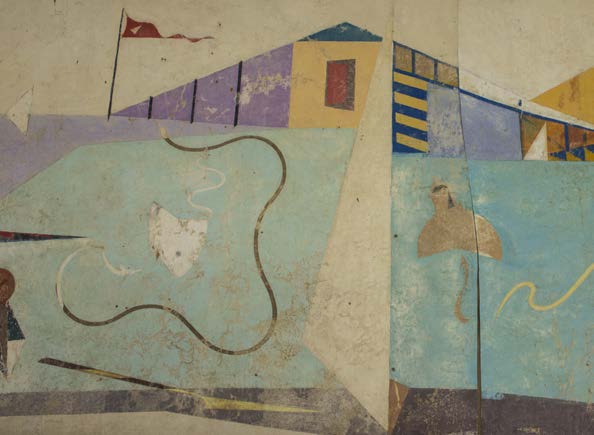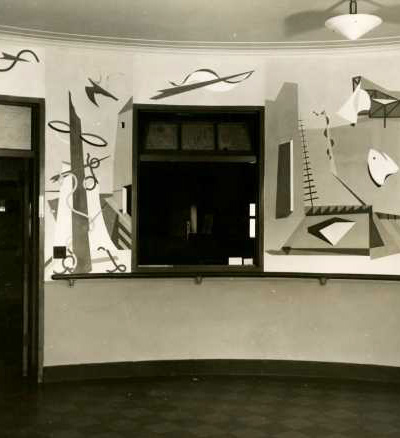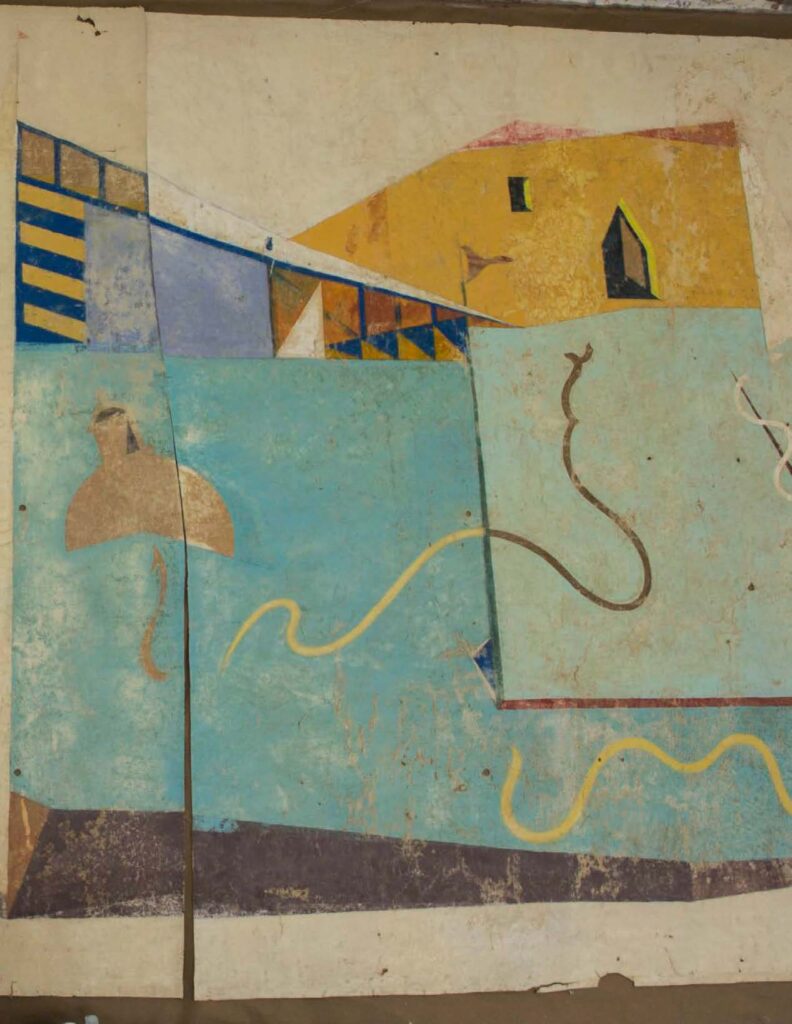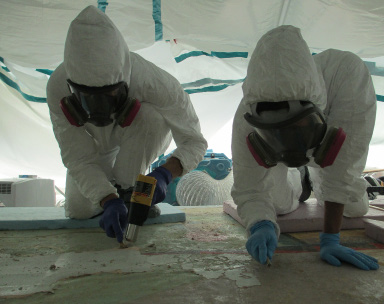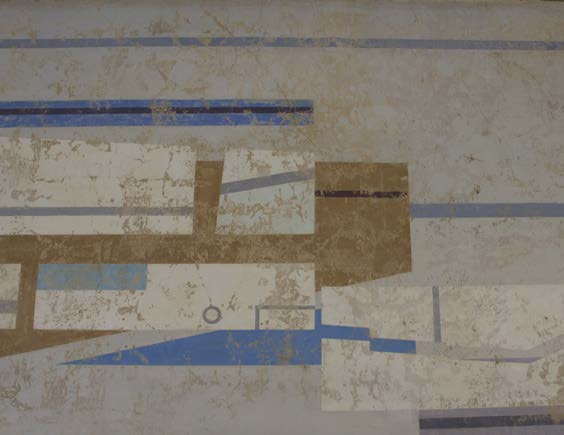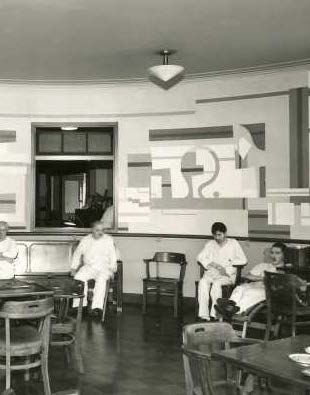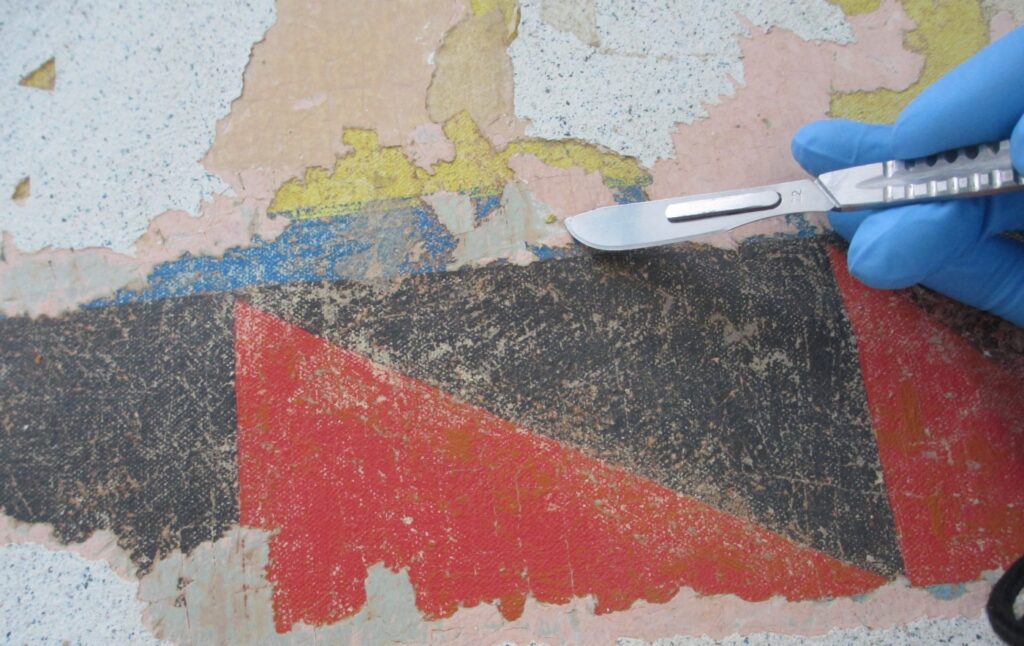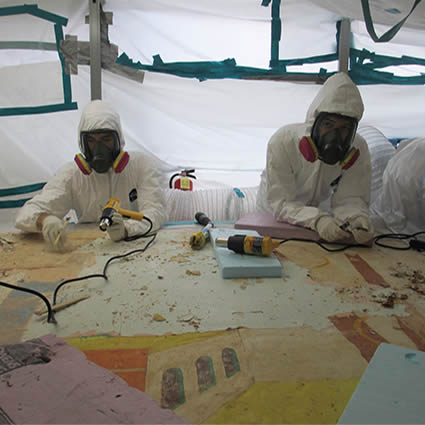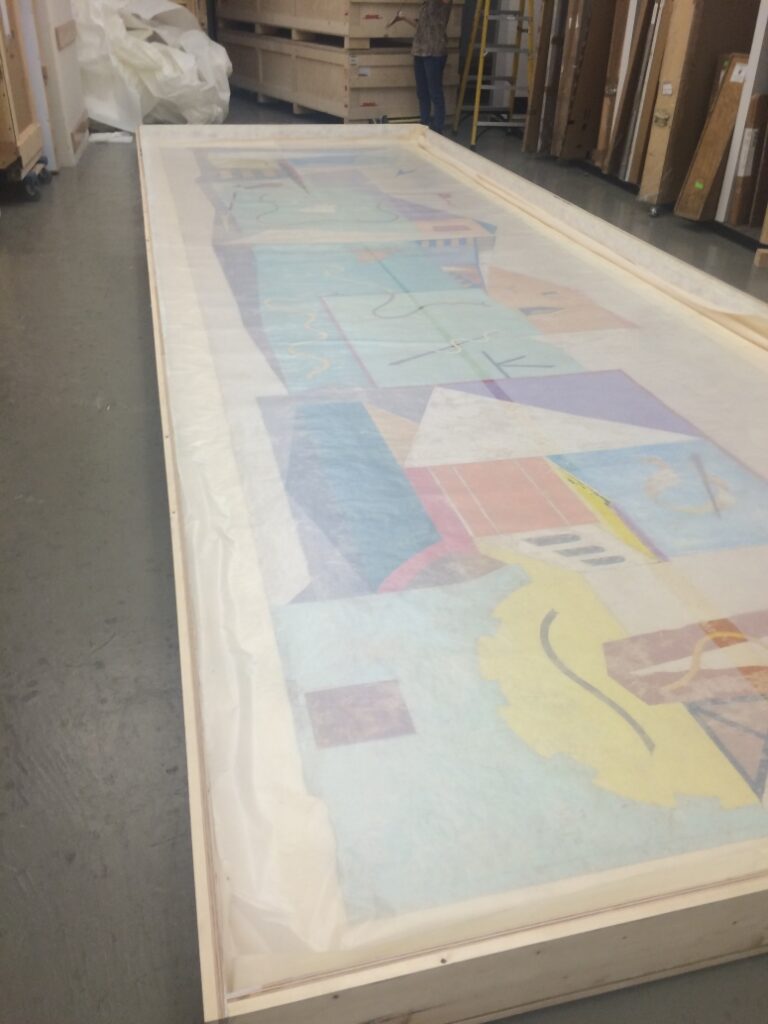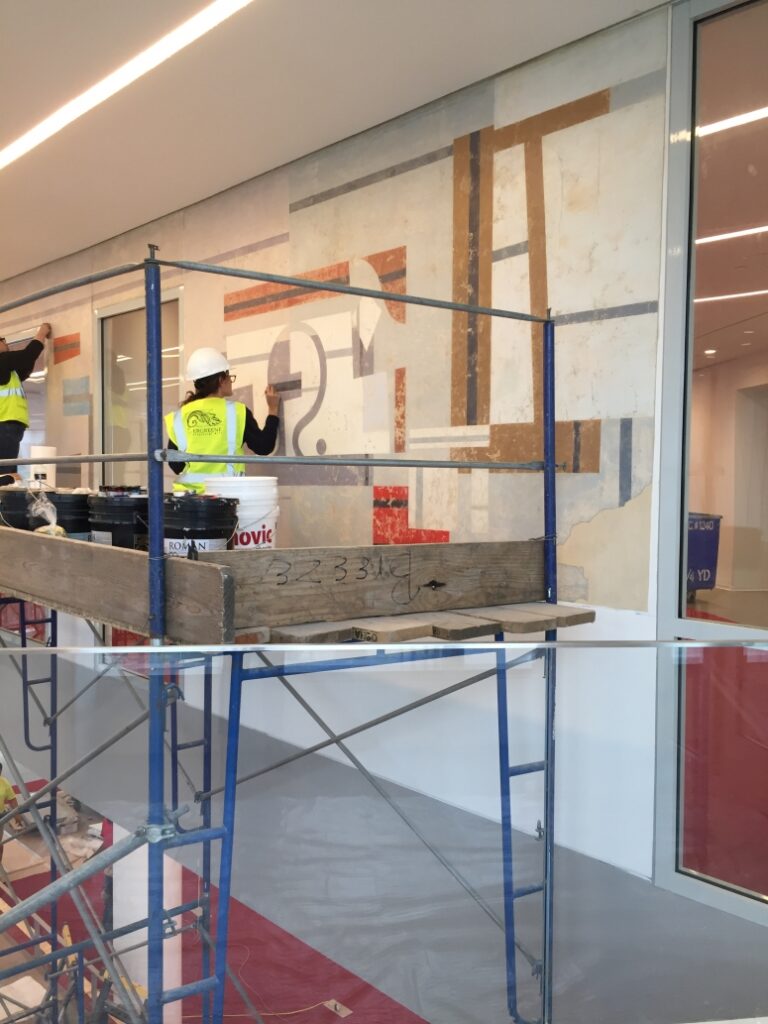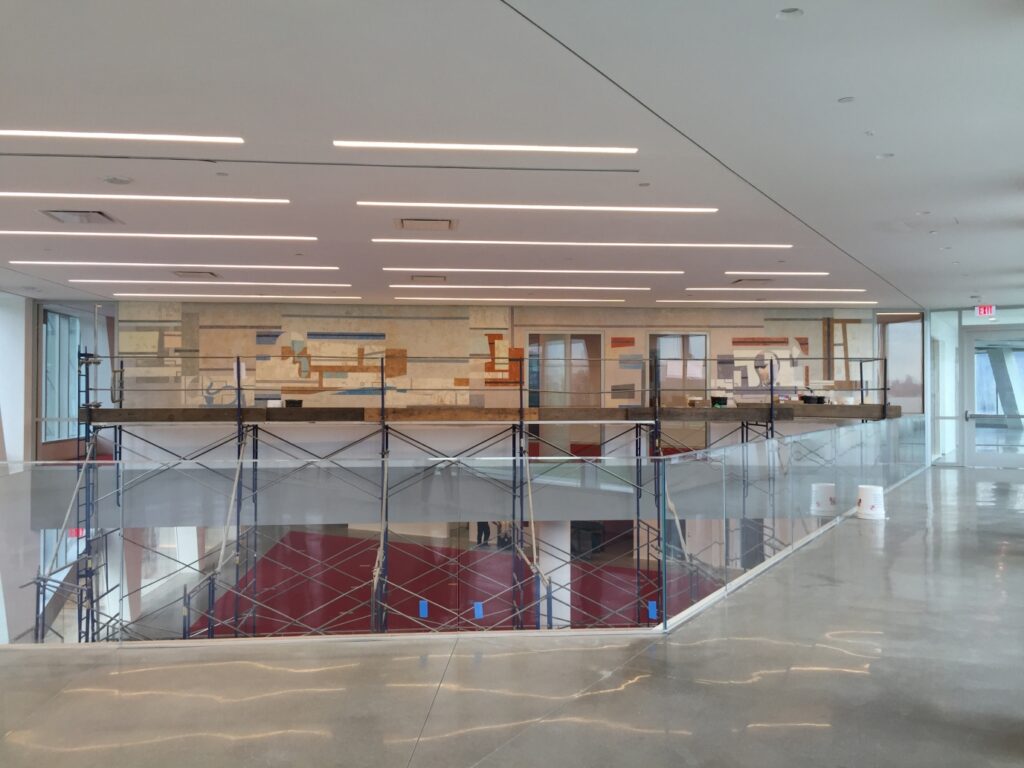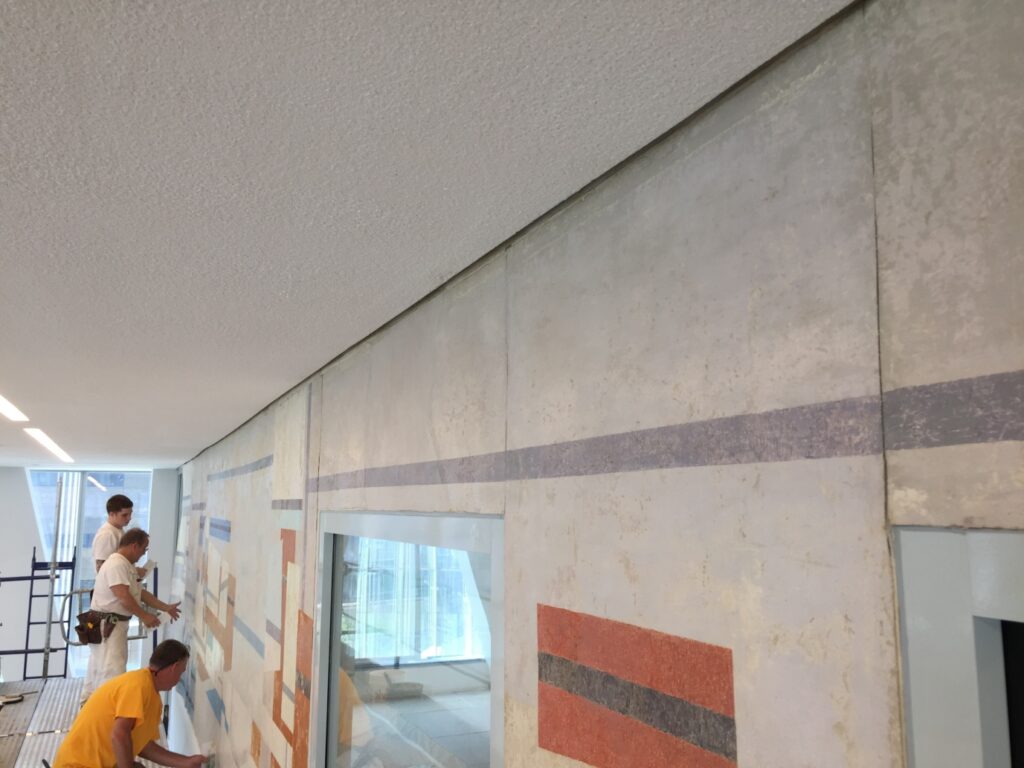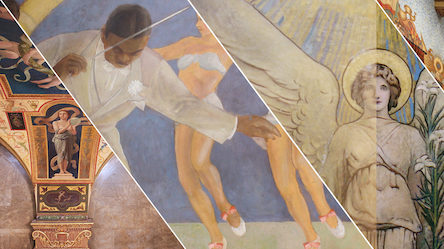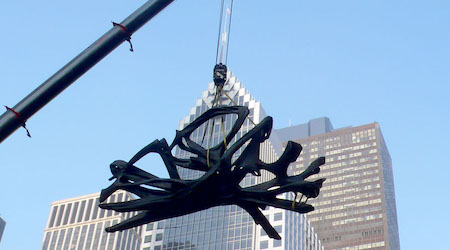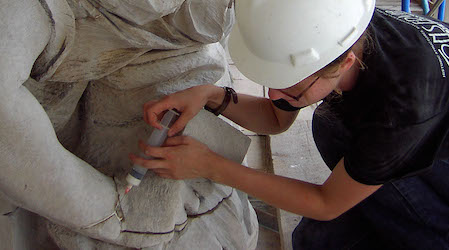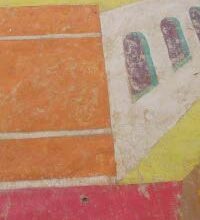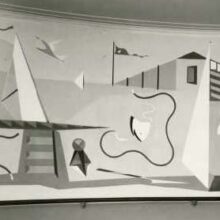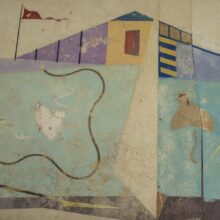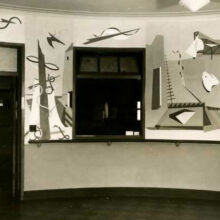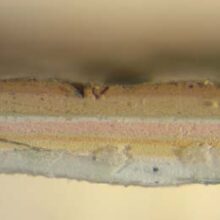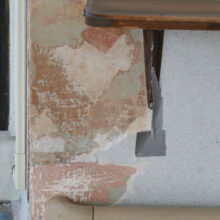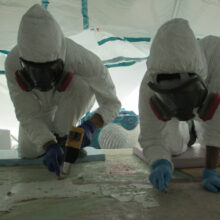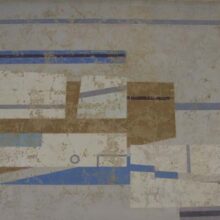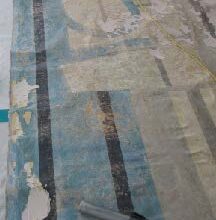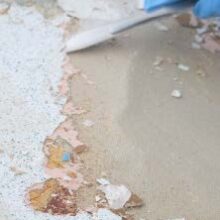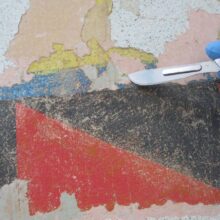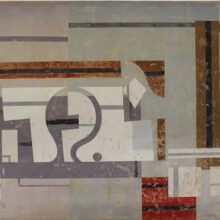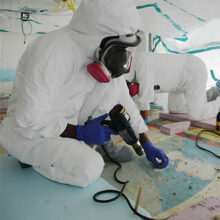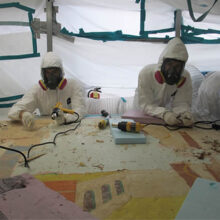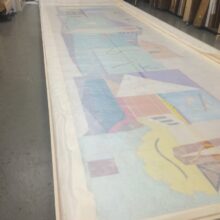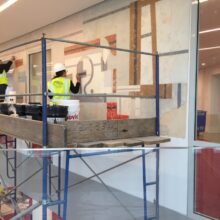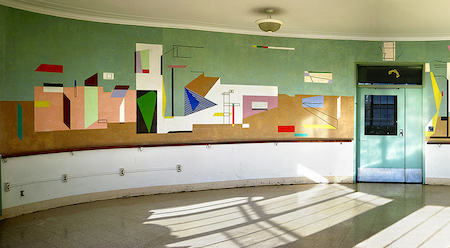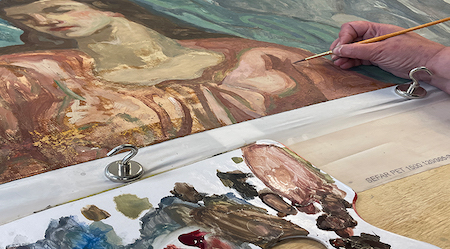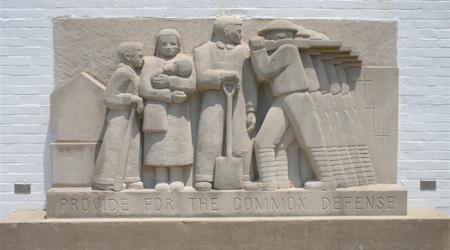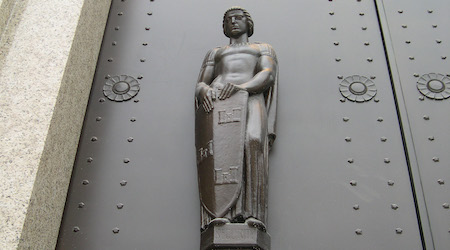When the Goldwater Memorial Hospital was to make way for the development of Cornell University’s Tech Campus, the first step in the effort to preserve several historic WPA-era murals was to find them. No information about their exact location or the details of their design has survived. At some point in the past, they disappeared. The most likely scenario was that they were covered with layers of paint. The plan was to locate the murals and move them to a new home. So the search began.
Unlike most of the post-depression era artwork depicting social-realist allegories, the Goldwater Hospital Murals are some of the rare abstract WPA works.
In the early 1940s, the Works Progress Administration (WPA) commissioned four large-scale murals for the Goldwater Hospital on Roosevelt Island in New York, originally known as the Welfare Hospital for Chronic Diseases. The WPA was a federally funded program created in 1935 under U.S. President Franklin D. Roosevelt’s New Deal. During its eight-year existence, the WPA put millions of unemployed Americans to work, including tens of thousands of artists with a wide range of experience and styles. The program sponsored an experimental body of art that ended up having a significant influence on subsequent American movements. An estimated 225,000 works of art were commissioned, introducing art to many public places, such as schools, libraries, hospitals, theaters, and post offices.
Four abstract artists, Ilya Bolotowsky, Albert Swinden, Joseph Rugolo, and Dane Chanase, each painted a monumental mural that stretched the length of the 7-by-50-foot curved walls of the circular hospital day rooms. At the time, patients and staff found themselves between modern, abstract American art and a spectacular view of the East River and Long Island City skyline—deliberately curated by the hospital’s architect, Isadore Rosenfield.
In 2014, EverGreene was engaged to locate, remove, and conserve the murals painted by Swinden and Rugolo. Our team implemented a series of small exposure windows to determine the murals’ exact location and condition. Photomicrograph samples were taken to establish the number of layers of overpaint. Once located, conservators safely removed the murals from the walls, careful not to damage the canvas. Using a variety of thin-bladed palette knives and scalpels, they detached the canvas from the plaster substrate and stabilized paint in select areas as needed. Affixed to the walls with a paste that contained lead, the murals were extremely heavy and required the conservators to wear protective clothing. As soon as the murals were successfully removed from the walls, they were packaged onto five 8’ long sonotubes and transported to EverGreene’s studio.
In the studio, a negative-air chamber and lead-containment zone was set up to ensure that those working inside and outside of the 6 mil double-plastic laboratory would not be affected by the lead-based adhesive that originally secured the murals to the wall. The lead adhesive was eliminated with an oscillating multi-tool.
Conservators implemented a custom process to painstakingly remove bit by bit of the post-historic overpaint. Both chemical strippers and hand tools were used. Scalpels and small blades proved most useful in the removal of certain areas of overpaint from the Swinden murals, while heat guns and wooden sculpting tools were effective in revealing the Rugolo artwork. Conservators cleaned soiling from the mural surface before encapsulating the front and back to ensure that they could be handled safely outside of containment. After the overpaint was removed, conservators began inpainting areas of damage or complete loss. Conservation paint studies were used to match the historic color palette of the artworks. After the conservation treatments were completed, the murals were transported and installed in their new homes on the Cornell Tech Campus.
The Bolotowsky mural was the first one to be located under seven layers of paint and restored in 2001. It was reinstalled in the Bloomberg Center, Cornell Tech’s first academic building, in 2017. The Chanase mural was never found and its whereabouts remain a mystery. It is unclear if it was ever installed at the hospital.

